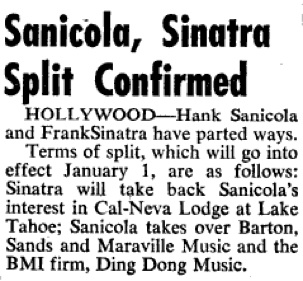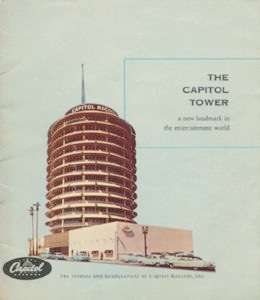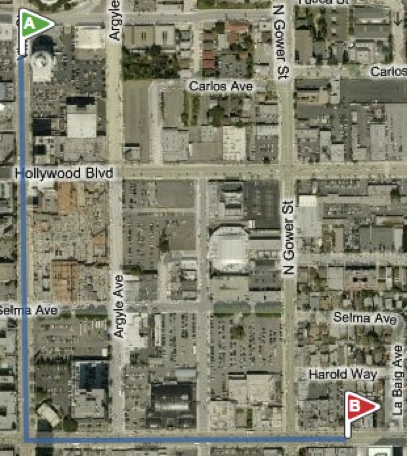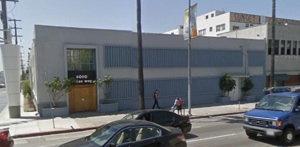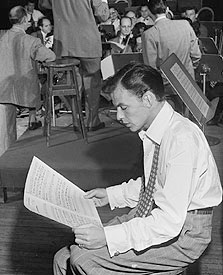Ring-A-Ding Ding - 1961
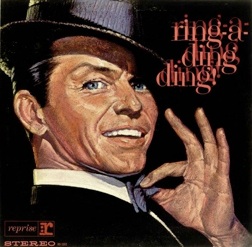
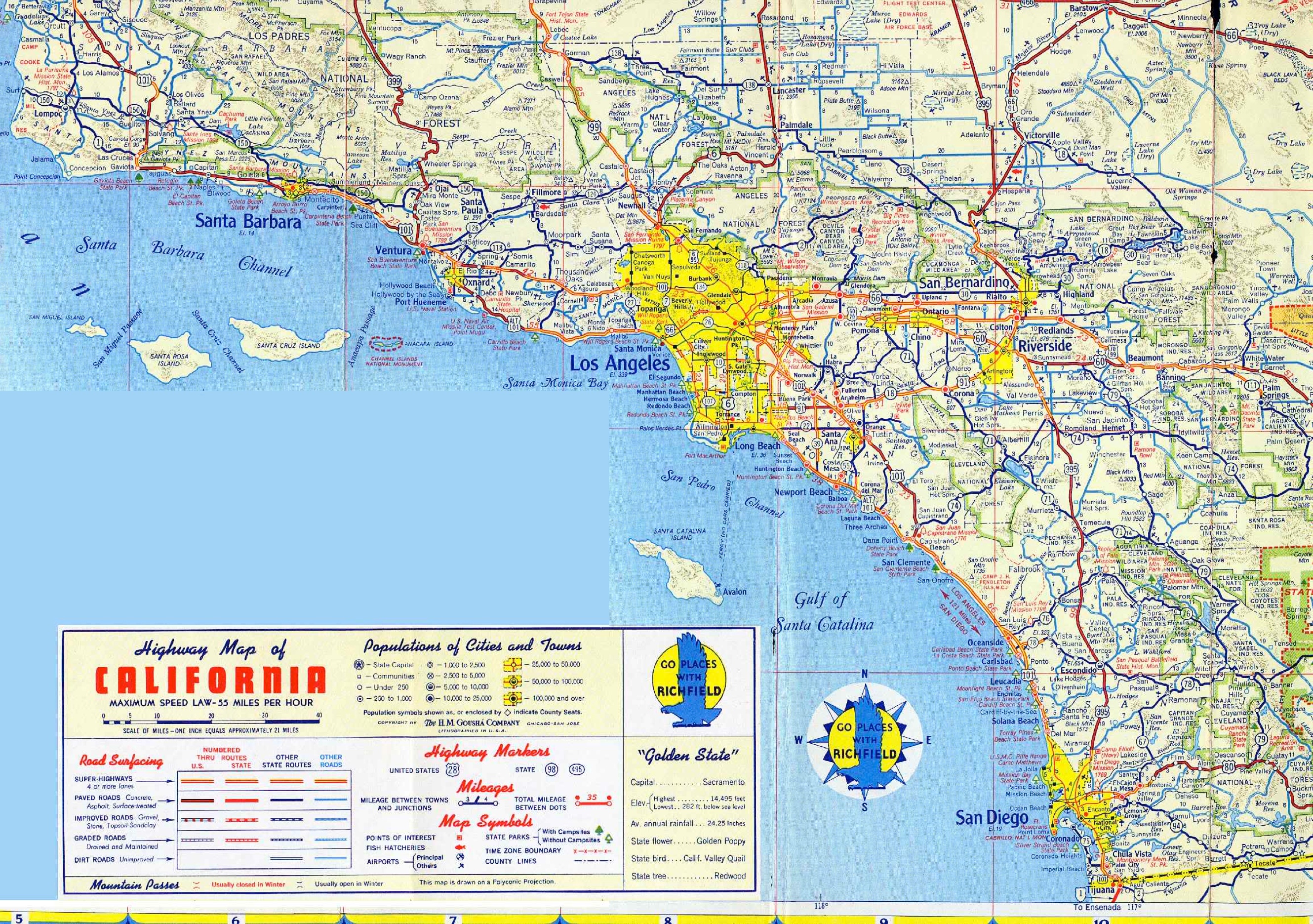

For those who don’t get to Hollywood very often, a quick geography lesson: To get from Capitol Records (“A” below) to the Reprise headquarters and United Recording (“B” below), one only had to travel about 3 blocks south to Sunset and hang a left, passing the world-famous Hollywood Palladium (grand opening act: Dorsey/Sinatra, 1940) and Columbia Square (where Sinatra often recorded for Columbia Records) on the left side of Sunset Boulevard, with Gower Gulch (where I’ve had many a 2 AM meal at Denny’s) just past that on the right. It’s very easy walking distance between the two studios.
Just down the street, a world away
at Capitol
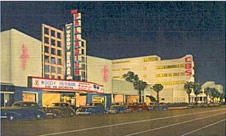

Even though Capitol and United were close in terms of geography, they were worlds apart in terms of approach, and when it came to label management, Mr. Sinatra was truly The Boss at Reprise. It was his company, top to bottom, and it likely felt a little odd to him at that first session for Ring-a-Ding Ding to realize that all the layers of management that were at play at Capitol were now literally “below him” at Reprise.
One of the first shots Frank called was to bring recording/engineering guru Milton “Bill” Putnam on board. Or was it? According to Chuck Granata’s excellent Sessions with Sinatra, former Decca Records man Morty Palitz was to be brought to Reprise “to direct its recording division,” whatever that means. Based on Palitz’s experience at Decca, Columbia, Jubilee, and other labels, it would seem that he was to be Reprise’s head of “A&R,” meaning that he would be a liaison and talent scout of sorts, and would likely wear a producer’s hat with some frequency, whilst pairing talent with song.
Palitz, a Sinatra friend since the Harry James days, and somebody who counted Milt Gabler, Sonny Burke, and Gordon Jenkins among his professional associates, clearly had a good ear for both talent and sound quality, having worked at Decca’s wonderful-sounding Pythian Temple, then getting Columbia’s pop orchestras out of their acoustically dead corporate spaces into the warm, naturally reverberant Liederkranz Hall. (Click both photos at left for more info.) Liederkranz was previously used by Victor Records in the early days of electrical recording, starting in 1927, but Victor vacated the property in 1931. Many of Mr. Sinatra’s large-group Columbia recordings were made in the third floor auditorium of Liederkranz during the 1940s (photo at left).
you died.” And that’s how Morty Palitz wound up missing the Reprise Riverboat....maybe. Billboard Magazine suggests otherwise, though.
Morty Palitz and Reprise: A Timeline
Palitz’s ear for quality and nose for business would have likely led to great success at Reprise, but a power even great than Frank stepped in at an inopportune time, and reminded us all that “It’s Sinatra’s world, we just die in it,” as recounted by Alec Wilder, quoted in Granata’s book: “Sinatra had finally decided to open up a recording company, and you were his favorite recording man. I remember your making a trip to Los Angeles to discuss the details with him. Everything was happily settled, and you came back to New York to wait for the job to start. Then that heart weakness grabbed you and totally unexpectedly,
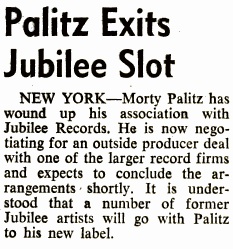
June, 1959
Palitz leaves Jubilee Records
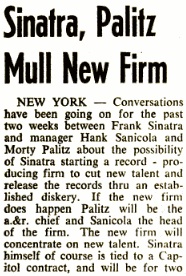
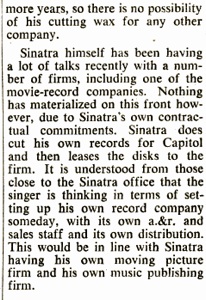
August, 1959
The Seeds of Reprise
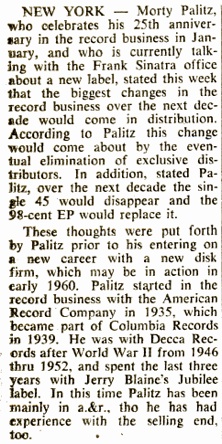
Mid-December, 1959
More Reprise Tidbits

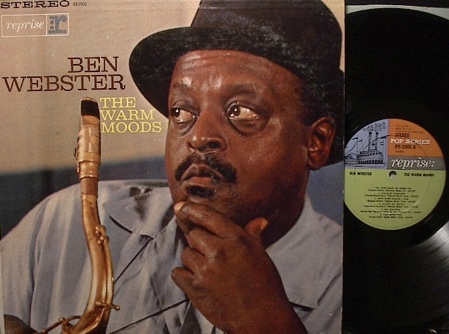
January 18 & 19, 1960
First-ever sessions for what would become a Reprise release. Sessions take place at Radio Recorders on Santa Monica Blvd. (a few blocks SW of Capitol and United), nicely engineered by Dave Wiechman. Palitz’s influence?
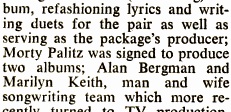
June, 1960
Out of the picture?
Palitz signs on as producer for Bing Crosby’s Project Records


Early December, 1961
Palitz definitely out of the picture
Early December 1960
Mo Austin hired from Verve to head Reprise; within weeks, decision made to not hire a full-time A&R person
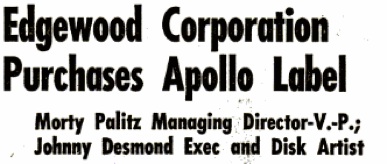
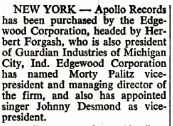
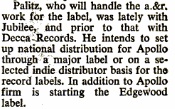
June, 1962
Palitz still quite active, but there is no mention of Reprise in the brief resume in paragraph 2

November, 1962
Record executive Morty Palitz dead of heart attack at age 53.
Dec. 19: First Sinatra session for Reprise; no sign of
Palitz
It would seem, then, that sudden, tragic death did not snatch Morty Palitz away from a bright future with Reprise Records, as the sequence of events just doesn’t back up such thinking. Although Mo Austin certainly proved himself to be a top-notch label boss despite his lack of A&R background, I have to wonder if perhaps Palitz would have been a better fit where Frank’s personal sessions were involved, but of course, we will never know how he may have influenced the Sinatra Sound, musically and sonically. (To clarify: I don’t think Palitz would have had Austin’s job, as Sanicola was mentioned for that post in 1959 [see August 1959 article above], but there could have been a large amount of teamwork between the two.)
One can’t help but wonder: Why did Palitz and Sinatra not make a professional love connection at Reprise? Too bad, as a man who had guided work by Louis Prima, Roy Eldridge, Peggy Lee, Woody Herman, Duke Ellington, Count Basie, Ray Noble, Louis Armstrong, Della Reese, Ella Fitzgerald, and many others, would have been a great man to have firmly in your corner, plus his apparent ear for sonic quality may have led the recording practices of Reprise in a different and superior direction. (If you are an iTunes user, go to the iTunes store and search for “Ben Webster Warm Moods” and have a listen to clip from “There’s No You” from those very first Reprise sessions, which have gorgeous tone, a world away from what came later.)
One odd little aside: It’s an interesting coincidence that official dissolution of the Sinatra/Sanicola relationship was announced in the same month as the death of Morty Palitz, Palitz and Sanicola once thought to be Sinatra’s left- and right-hand men in Reprise. From Billboard:








